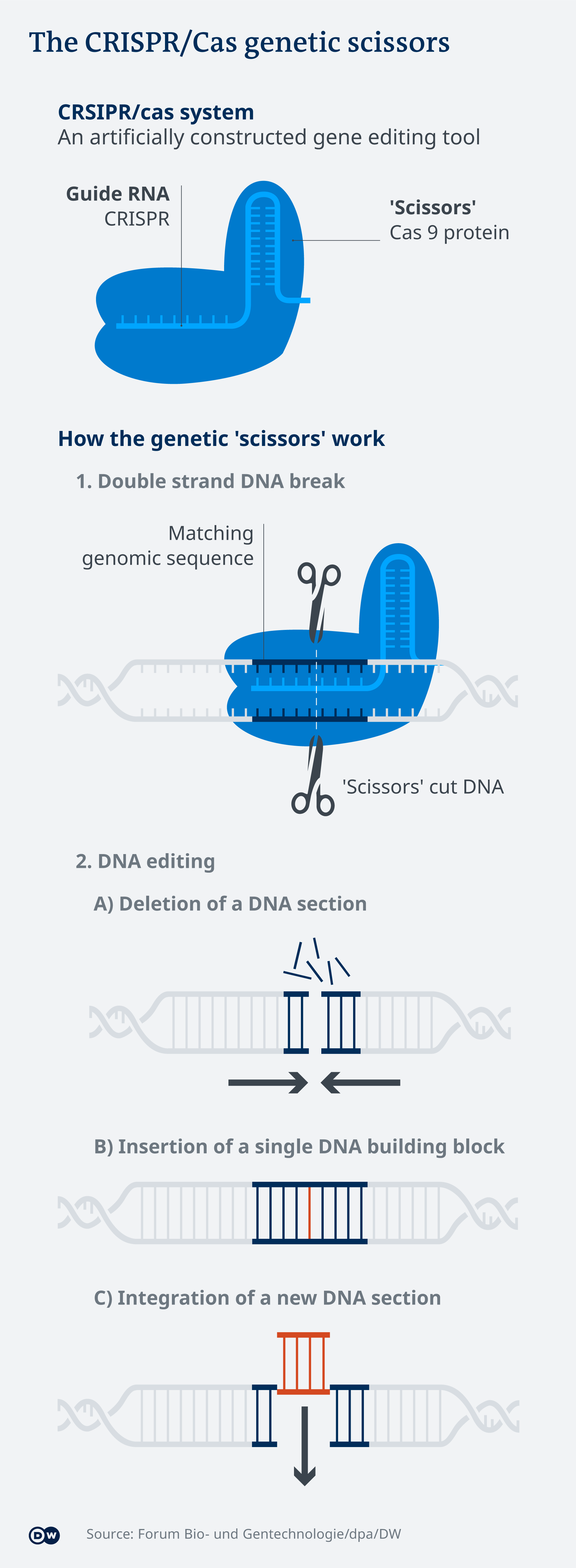PETITE MIRICALE CRISPR CRITTER
New CRISPR/Cas9 technique corrects cystic fibrosis in cultured human stem cells
IMAGE: SWELLING RESPONSE OF PATIENT DERIVED MINI-GUTS. COLLAPSED ORGANOIDS (LEFT) SHOW ACTIVE SWELLING RESPONSE THAT IS MEDIATED BY THE CFTR ION CHANNEL AFTER ONE HOUR INCUBATION WITH FORSKOLIN (RIGHT). GREEN STAINING SHOWS COMPLETE CELLS (CALCEIN GREEN) AND DNA IS SHOWN IN BLUE. view more
CREDIT: EYLEEN DE POEL, (C) UMC UTRECHT
Researchers from the group of Hans Clevers (Hubrecht Institute) corrected mutations that cause cystic fibrosis in cultured human stem cells. In collaboration with the UMC Utrecht and Oncode Institute, they used a technique called prime editing to replace the ‘faulty’ piece of DNA with a healthy piece. The study, published in Life Science Alliance on August 9th, shows that prime editing is safer than the conventional CRISPR/Cas9 technique. “We have for the first time demonstrated that this technique really works and can be safely applied in human stem cells to correct cystic fibrosis.”
Cystic fibrosis (CF) is one of the most prevalent genetic diseases worldwide and has grave consequences for the patient. The mucus in the lungs, throat and intestines is sticky and thick, which causes blockages in organs. Although treatments are available to dilute the mucus and prevent inflammations, CF is not yet curable. However, a new study from the group of Hans Clevers (Hubrecht Institute) in collaboration with the UMC Utrecht and Oncode Institute offers new hope.
Correcting CF mutations
The researchers succeeded in correcting the mutations that cause CF in human intestinal organoids. These organoids, also called mini-organs, are tiny 3D structures that mimic the intestinal function of patients with CF. They were previously developed by the same research group from stem cells of patients with CF and stored in a biobank in Utrecht. For the study, published in Life Science Alliance, a technique named prime editing was used to replace the piece of mutated DNA that causes CF with a healthy piece of DNA in these organoids.
Safer than CRISPR/Cas9
Prime editing is a newer version of the better-known gene editing technique CRISPR/Cas9. CRISPR/Cas9 cuts the DNA before correcting it. Although this corrects the mutated piece of DNA, it also causes damage in other regions in the genome. “In our study, prime editing proves to be a safer technique than the conventional CRISPR/Cas9. It can build in a new piece of DNA without causing damage elsewhere in the DNA. That makes the technique promising for application in patients,” says Maarten Geurts, first author on the publication.
Swelling
The mutations that cause CF are localized in the CFTR channel, which is present in the cells of various organs including the lungs. Due to the mutations, the channel does not function properly, leaving the layer of mucus that covers the cells with too little water: the mucus becomes sticky. The addition of a substance called forskolin causes healthy organoids to swell, but this does not happen in organoids with mutations in the CFTR channel. “We applied prime editing to the mutations, after which the treated organoids demonstrated the same response as the healthy organoids: they became swollen. That provided us with proof that our technique worked and replaced the mutated DNA,” Geurts explains.
Curing genetic diseases
Now that the researchers showed that the mutations that cause CF can be safely corrected, applications in the clinic come one step closer. “New variants of CRISPR/Cas9, such as prime editing, can safely correct mutations without causing damage in other regions of the DNA. This will hopefully enable us to cure or even prevent genetic diseases in the future.” But before that, some challenges still lie ahead for the researchers. The technique for example still needs to be adapted for safe use in humans. “But this is a great step towards successfully applying prime editing in the clinic,” Geurts concludes.
CAPTION
Cystic Fibrosis patient derived organoids do not show a swelling response. The swelling response is regained after prime-editing mediated repair of the CFTR channel.
CREDIT
Eyleen de Poel and Maarten Geurts, (c) UMC Utrecht and Hubrecht Institute
Publication
"Evaluating CRISPR-based Prime Editing for cancer modeling and CFTR repair in organoids". Maarten Geurts, Eyleen de Poel, Cayetano Pleguezuelos-Manzano, Rurika Oka, Léo Carrillo, Amanda Andersson-Rolf, Matteo Boretto, Jesse Brunsveld, Ruben van Boxtel, Jeffrey Beekman, and Hans Clevers, Life Science Alliance (2021).
Hans Clevers is group leader at the Hubrecht Institute for Developmental Biology and Stem Cell Research and at the Princess Máxima Center for Pediatric Oncology. He is also University Professor at the Utrecht University and Oncode Investigator.
About the Hubrecht Institute
The Hubrecht Institute is a research institute focused on developmental and stem cell biology. It encompasses 21 research groups that perform fundamental and multidisciplinary research, both in healthy systems and disease models. The Hubrecht Institute is a research institute of the Royal Netherlands Academy of Arts and Sciences (KNAW), situated on Utrecht Science Park. Since 2008, the institute is affiliated with the UMC Utrecht, advancing the translation of research to the clinic. The Hubrecht Institute has a partnership with the European Molecular Biology Laboratory (EMBL). For more information, visit http://www.hubrecht.eu.
JOURNAL
Life Science Alliance
DOI
https://doi.org/10.26508/lsa.202000940
METHOD OF RESEARCH
Experimental study
SUBJECT OF RESEARCH
Human tissue samples
ARTICLE TITLE
Evaluating CRISPR-based Prime Editing for cancer modeling and CFTR repair in organoids
ARTICLE PUBLICATION DATE
8-Aug-2021


